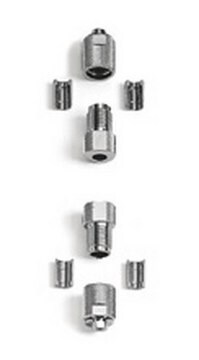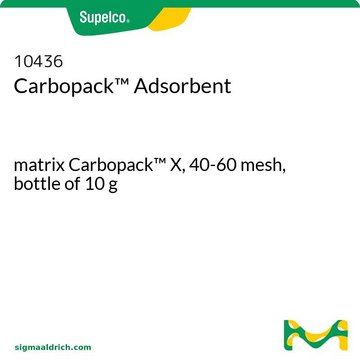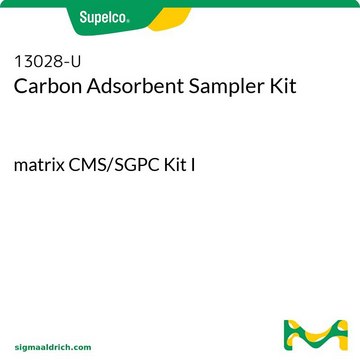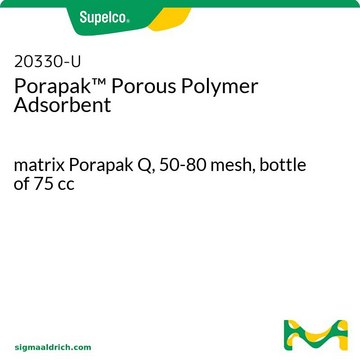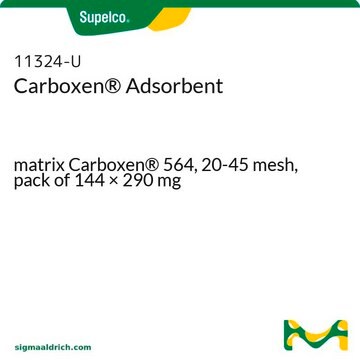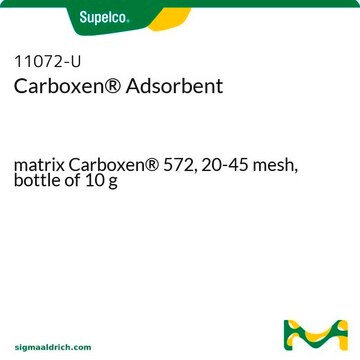10478-U
Carboxen® Carbon Adsorbent
matrix Carboxen® 1000, 60-80 mesh, bottle of 10 g
Synonyme(s) :
carbon adsorbent, CMS, 40-60 mesh
About This Item
Produits recommandés
product name
Adsorbant Carboxen®, matrix Carboxen® 1000, 60-80 mesh, bottle of 10 g
Gamme de produits
Carboxen®
Forme
powder
Conditionnement
bottle of 10 g
Technique(s)
LPLC: suitable
Superficie
~1200 m2/g
Matrice
Carboxen® 1000
Groupe de la matrice active
carbon
Taille des particules
60-80 mesh
Dimension de pores
~0.16 cm3/g mesoporosity
~0.25 cm3/g macroporosity
~0.44 cm3/g microporosity
~10-12 Å pore diameter
Densité
~0.47 g/mL (free fall density)
Technique de séparation
reversed phase
Vous recherchez des produits similaires ? Visite Guide de comparaison des produits
Description générale
Caractéristiques et avantages
- Structure sphérique
- Matériau dur (dureté "Ball Pan" > 98 %)
- Stable jusqu'à 400 °C
- Grande pureté
- Facile à conditionner
- Stable sur toute la gamme de pH
- Ne crée pas de contrepression
- Grande stabilité aux chocs osmotiques
- Structure de pore conique (macroporeuse, mésoporeuse ou microporeuse)
Autres remarques
Informations légales
Code de la classe de stockage
11 - Combustible Solids
Classe de danger pour l'eau (WGK)
nwg
Point d'éclair (°F)
Not applicable
Point d'éclair (°C)
Not applicable
Équipement de protection individuelle
Eyeshields, Gloves, type P3 (EN 143) respirator cartridges
Faites votre choix parmi les versions les plus récentes :
Certificats d'analyse (COA)
Désolés, nous n'avons pas de COA pour ce produit disponible en ligne pour le moment.
Si vous avez besoin d'assistance, veuillez contacter Service Clients
Déjà en possession de ce produit ?
Retrouvez la documentation relative aux produits que vous avez récemment achetés dans la Bibliothèque de documents.
Les clients ont également consulté
Articles
Carbon Molecular sieves (CMS) are a versatile range of adsorbents that can be tailored for specific applications. Supelco® scientists have been synthesizing synthetic CMS carbons for several decades, starting from tailoring of the starting polymers/copolymers, to modifying the final properties of the subsequent CMS carbon.
Notre équipe de scientifiques dispose d'une expérience dans tous les secteurs de la recherche, notamment en sciences de la vie, science des matériaux, synthèse chimique, chromatographie, analyse et dans de nombreux autres domaines..
Contacter notre Service technique



